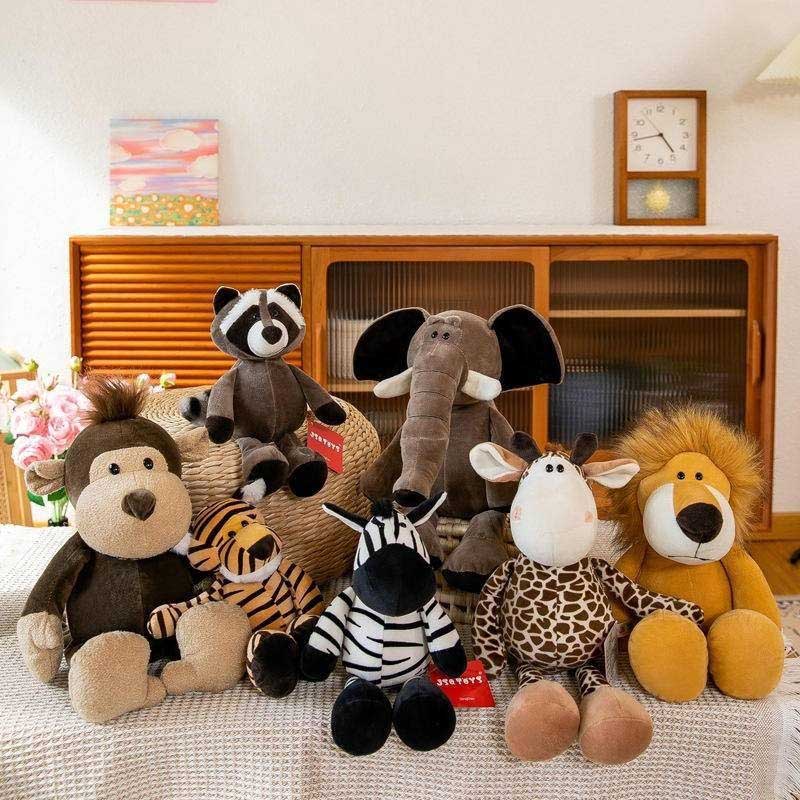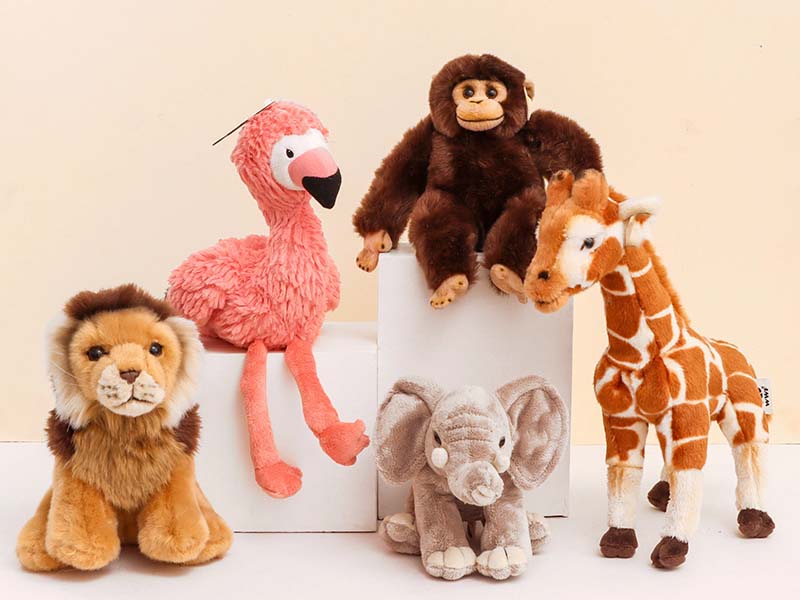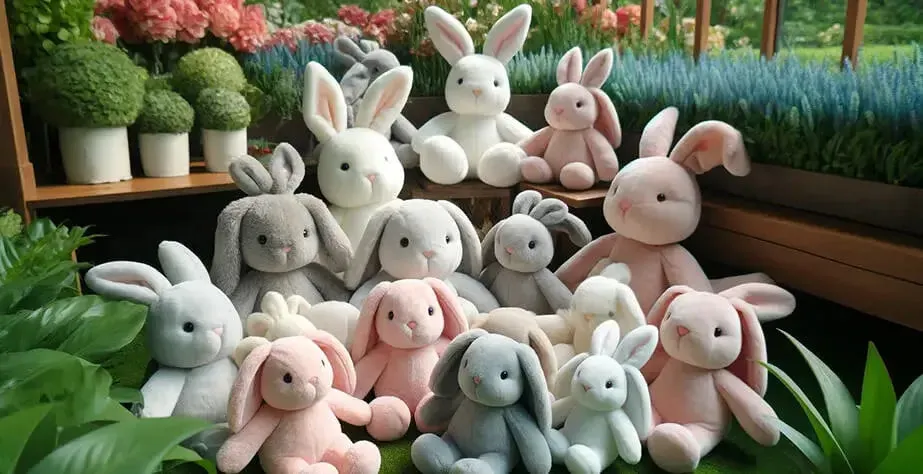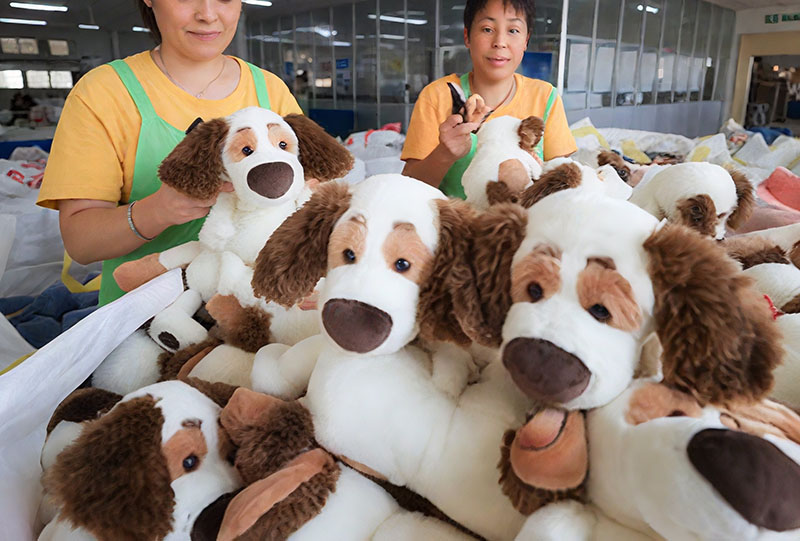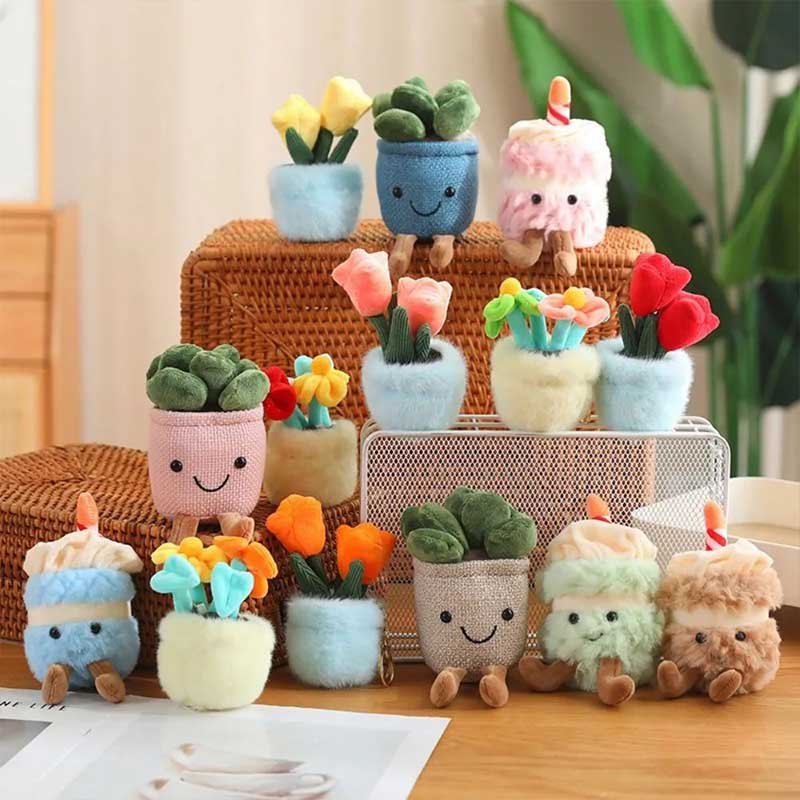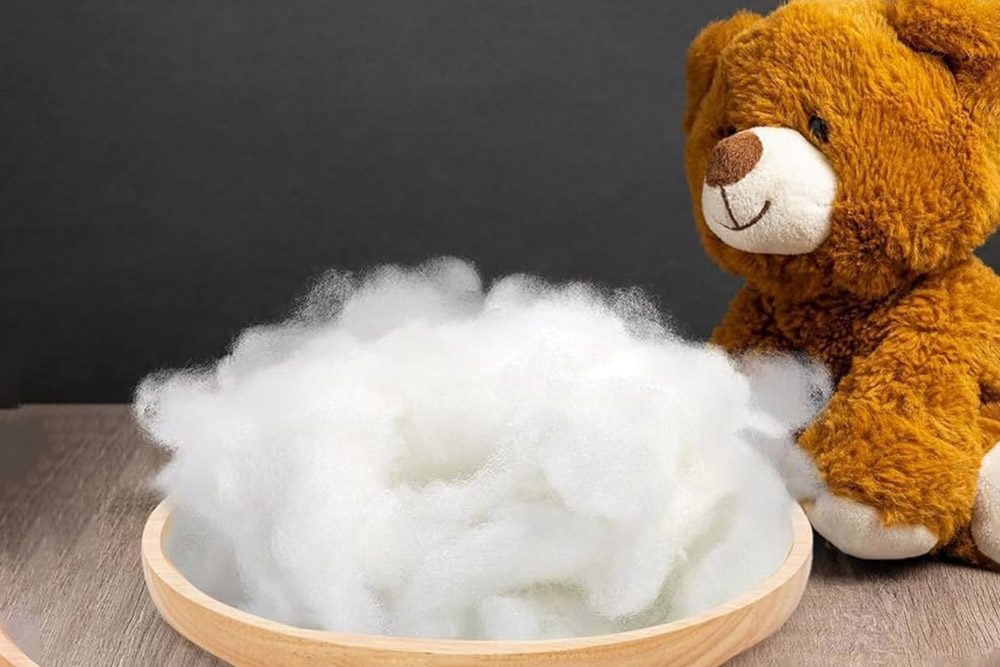Weighted stuffed animals combine the softness of plush with therapeutic benefits. These toys are designed not only for play but also for comfort, stress relief, and sleep support.
A weighted stuffed animal is a plush toy filled with extra weight, usually glass beads, pellets, or other safe fillings. The added pressure works like a gentle hug, calming the nervous system and improving sleep. Buyers source them for retail, wellness markets, and sensory support programs, making them a fast-growing category worldwide.
In the sections below, I’ll explain how weighted plush toys work, what materials are used, how they compare to traditional plush, and what buyers should know when sourcing. This will help you make confident purchasing decisions and match products to your target market.
1) What Is a Weighted Stuffed Animal and How Does It Work?

Weighted plush toys mix play with function.
A weighted stuffed animal contains an inner filling of glass beads, micro pellets, or similar materials that add 1–3 kilograms of weight. This weight creates deep pressure stimulation (DPT), which relaxes the body and mind. It is widely used for children needing comfort, adults managing stress, and individuals with sensory processing needs.
The concept is simple: when a user hugs or places the plush on their body, the even distribution of weight stimulates pressure receptors in the skin and muscles. This is similar to how a weighted blanket works but in a smaller, more portable format. Unlike blankets, plush toys are versatile—they can sit on laps, shoulders, or be cuddled in bed.
Designers typically keep the total weight between 1–3 kg depending on the age group. For children, the weight should not exceed 10% of body weight for safety. For adults, heavier plush is acceptable as long as it remains comfortable to hold. To achieve this, factories create multiple inner pouches or compartments to hold weighted beads. This ensures the weight does not shift unevenly during use or washing.
The toy remains soft and huggable because polyester fiberfill surrounds the weighted core. This balance of softness and structure makes it practical for everyday use. Seams must be reinforced with double stitching to handle stress and prevent leakage of fillings. Factories also run tension tests to ensure limbs and seams can withstand pulling.
Buyers find this category appealing because weighted plush toys are not only toys but also functional wellness products. They expand retail channels, from toy stores and e-commerce platforms to wellness shops and even therapy clinics. For corporate gifting or seasonal promotions, they can be branded with logos and sold as stress-relief companions.
| Feature | Typical Range/Note | Buyer Benefit |
| Weight range | 1–3 kg | Matches comfort and safety levels |
| Core filling | Glass beads, pellets, eco options | Safe, durable, and washable |
| Distribution method | Multiple inner pouches | Even weight, long-lasting comfort |
| Applications | Children, adults, sensory programs | Expands market opportunities |
Now that we know how weighted plush toys work, let’s see why they are in such demand for stress relief and sleep support.
2) How Do Weighted Plush Toys Support Stress Relief and Sleep?

These toys provide comfort beyond entertainment.
Weighted stuffed animals use deep pressure stimulation to calm the nervous system. This reduces cortisol (stress hormone) levels, promotes serotonin production, and supports melatonin release, leading to better sleep and relaxation. They are valued for wellness, bedtime routines, and mental health support.
For children, bedtime can be stressful, especially for those with anxiety or sensory sensitivities. Weighted plush toys provide a safe and familiar solution by creating a sense of security. Parents report that children fall asleep faster when holding a weighted toy, and nighttime waking is reduced. This makes them a natural alternative to sleep training tools.
For adults, weighted plush toys serve as a compact, portable option compared to weighted blankets. Many adults find comfort in placing a weighted toy on their chest or lap after a long workday. The gentle pressure slows the heart rate and signals the body to relax, similar to the grounding effect of meditation. In wellness markets, these toys are often marketed as “stress-relief companions” rather than just stuffed animals.
For individuals with autism spectrum disorder (ASD) or ADHD, weighted plush toys provide valuable sensory input. Occupational therapists use them to calm over-stimulation and improve focus. Schools and therapy centers increasingly buy them in bulk to support sensory-friendly classrooms.
From a business perspective, this product bridges multiple industries. In retail, it can be positioned as both a comfort toy and a wellness accessory. In healthcare, it becomes a tool for therapy. In e-commerce, it benefits from strong keyword demand such as “weighted plush for anxiety” or “sleep plush toy.” The category has strong cross-market appeal, making it profitable for wholesalers and retailers alike.
| Benefit | How It Works | Buyer Value |
| Stress reduction | Gentle pressure calms nerves | Matches wellness consumer trends |
| Sleep support | Boosts serotonin & melatonin | Expands bedtime product lines |
| Sensory comfort | Reduces overstimulation | Appeals to therapy & school buyers |
| Adult relaxation | Portable alternative to blankets | Wider consumer demographic |
With demand growing, let’s explore what materials and fillings are commonly used to ensure safety and comfort in weighted plush toys.
3) Which Materials and Fillings Are Commonly Used in Weighted Plush Toys?

Material choices define safety, softness, and long-term performance.
Weighted stuffed animals are typically made with outer fabrics such as short plush, crystal velvet, or minky. The weight comes from glass beads, PP pellets, or eco-fillings, balanced with polyester fiberfill for softness. Reinforced stitching and inner compartments maintain safety and shape.
The outer fabric is the first touchpoint for consumers. Short plush and velboa are widely used in mid-market toys because they are durable, easy to clean, and cost-effective. Crystal velvet and minky are chosen for baby and premium markets due to their silky feel. Buyers must decide fabric type based on the end market—retail, wellness, baby, or therapeutic.
For fillings, glass beads are the most reliable choice. They are non-toxic, washable, and heavy enough to provide consistent weight without excessive bulk. Plastic PP pellets are another option, offering lower cost but less eco appeal. Some manufacturers also use steel beads, though these are less common due to higher cost and washing concerns.
Eco-conscious buyers are turning to RPET beads or natural sand-like fillings. While these increase price slightly, they support sustainability claims and align with consumer expectations in markets such as Europe and North America. Polyester fiberfill remains a standard surrounding layer to keep toys huggable and soft.
From a manufacturing perspective, internal pouches are critical. They prevent beads from pooling in one area and keep the toy’s shape intact. Factories sew multiple compartments into the body to ensure balanced distribution. Double-stitching reinforces seams, reducing leakage risks during play or washing.
For wholesale buyers, detailed material specifications should be confirmed before production. This includes fabric GSM, filling type, pouch design, and seam reinforcements. A transparent bill of materials helps avoid disputes and ensures the final product meets brand and regulatory requirements.
| Component | Options | Buyer Advantage |
| Outer fabric | Short plush, velboa, minky, velvet | Aligns with brand positioning |
| Weighted filling | Glass beads, PP pellets, eco-fillings | Balances cost, safety, sustainability |
| Soft stuffing | Polyester fiberfill | Comfort and shape retention |
| Structure | Multi-pouch inner design | Even weight, reduced defects |
Once materials are selected, buyers must also ensure compliance with strict safety standards and certifications.
4) What Safety Standards and Certifications Are Required for Weighted Stuffed Animals?

Safety is the most important factor for weighted plush toys.
Weighted stuffed animals must pass international toy safety certifications such as CE, EN71, ASTM F963, and CPSIA. Testing covers chemical safety, seam strength, flammability, and metal detection. Buyers should only source from factories with certified systems and documented compliance.
Because weighted toys contain bead fillings, they undergo stricter tests than ordinary plush. Seam strength tests confirm that beads do not leak under tension. Pull tests ensure eyes, noses, and other components cannot be detached by children. Flammability tests measure how quickly fabrics ignite, protecting against household fire risks.
Chemical tests are equally important. Fabrics and fillings must be free from harmful substances such as azo dyes, lead, and phthalates. Buyers should request test reports from certified third-party labs to confirm compliance. In markets like the EU, CE marking is required, while in the US, ASTM F963 and CPSIA regulations are mandatory.
Metal detection is a critical step in production. Each toy passes through a needle detector to ensure no broken needles or sharp fragments remain inside. This step protects consumers and prevents costly recalls. For eco-focused buyers, certifications such as GRS (Global Recycled Standard) or OEKO-TEX Standard 100 provide additional reassurance.
Buyers should also check whether factories follow ISO 9001 quality management or BSCI/SMETA audits for ethical sourcing. These systems show reliability and accountability, giving buyers confidence that production is consistent and responsible.
| Certification/Test | Scope | Buyer Value |
| CE / EN71 | EU toy safety compliance | Access to European markets |
| ASTM F963 / CPSIA | US toy safety compliance | Essential for retail/e-commerce |
| Flammability tests | Fabric ignition resistance | Meets safety regulations |
| Needle detection | Broken needle check | Prevents recalls and complaints |
| GRS / OEKO-TEX | Sustainability certification | Appeals to eco-conscious buyers |
Having established safety requirements, let’s compare weighted plush toys with traditional stuffed animals to understand their unique market appeal.
5) How Do Weighted Plush Toys Compare to Traditional Stuffed Animals?

Weighted toys add functionality to a familiar category.
Compared with traditional plush toys, weighted versions include bead fillings that provide therapeutic benefits. Traditional toys are mainly for play and emotional bonding, while weighted toys target stress relief, sleep support, and sensory care. This difference expands their market and allows premium positioning.
Traditional stuffed animals are soft, light, and designed mainly for entertainment and comfort. They are easy to produce and cater to a wide audience, from children to gift buyers. Weighted stuffed animals, however, introduce a functional layer. Their added fillings make them heavier, providing therapeutic benefits beyond simple cuddling.
This difference creates new market opportunities. Weighted toys appeal not only to children but also to adults seeking wellness solutions, parents managing children’s sleep routines, and therapists working with sensory-sensitive individuals. Their multifunctional nature positions them as both toys and lifestyle products.
From a sourcing perspective, weighted toys require higher production standards. Seams need reinforcement, fabrics must withstand tension, and fillings must be compartmentalized for even distribution. QC teams must focus more on leakage prevention and wash durability. These extra steps increase production cost slightly, but the retail price is higher, resulting in improved margins for buyers.
In terms of branding, weighted plush can be positioned in multiple categories: toy, home, wellness, and gifting. This allows wider distribution channels than traditional plush. E-commerce platforms often list them under both “toys” and “health & wellness,” increasing visibility.
| Aspect | Traditional Plush Toys | Weighted Plush Toys |
| Filling | Polyester fiberfill | Fiberfill + weighted beads |
| Purpose | Play, decoration, comfort | Play + stress relief + sleep aid |
| Safety focus | Standard toy compliance | Extra seam & filling safety |
| Price range | Low to medium | Medium to high |
| Market appeal | Children, gifts, décor | Children, adults, therapy, wellness |
With clear advantages established, buyers must know what to evaluate when sourcing weighted plush toys from manufacturers.
6) What Factors Should Buyers Consider When Sourcing Weighted Plush Toys from Manufacturers?

Smart sourcing ensures both safety and profitability.
When sourcing weighted plush toys, buyers should evaluate manufacturer experience, material transparency, certifications, production capacity, MOQ flexibility, and lead time reliability. ODM/OEM services and quality control systems also determine long-term success.
Experience is the first filter. Factories with prior weighted toy projects understand seam reinforcements, balanced pouch design, and compliance testing. This reduces risks of failed lab tests or shipment delays. Buyers should ask for case studies or past client references to confirm experience.
Material transparency is equally important. Every quotation should specify outer fabric type, GSM, filling material, compartment design, and seam stitching density. Clear specifications prevent misunderstandings and allow accurate comparison across suppliers. For eco-conscious buyers, factories offering RPET fabrics and fillings add strong branding value.
Certifications and compliance testing must be non-negotiable. Buyers should request CE, ASTM, and CPSIA test reports for similar SKUs. Ethical audits such as BSCI or SMETA also add trust when working with global retailers.
Production capacity and lead times vary. Standard lead times are 45–60 days, but some factories with automated cutting and sewing lines can deliver faster. MOQ flexibility is critical for startups or niche buyers, while scalable capacity is vital for retail chains.
ODM/OEM services make products unique. Factories with in-house design teams can adjust patterns, develop packaging, and even add brand embroidery or custom prints. This helps buyers stand out in crowded e-commerce and retail spaces.
After-sales support is another key factor. Reliable factories offer defect ratio guarantees, provide clear inspection reports, and maintain communication even after delivery. This builds long-term partnerships instead of one-time transactions.
| Factor | Why It Matters | Buyer Value |
| Experience | Weighted toy expertise | Reduces compliance risks |
| Specifications | Detailed fabric/filling info | Transparent cost & quality control |
| Certifications | CE, ASTM, CPSIA, BSCI | Ensures global market access |
| MOQ & scalability | Flexible for startups and retailers | Matches different sourcing models |
| ODM/OEM services | Custom fabrics, packaging, design | Creates brand differentiation |
With all factors considered, weighted plush toys clearly present an opportunity for both safety-focused and wellness-driven markets.
Weighted stuffed animals combine the softness of plush with the calming benefits of deep pressure. They are more than toys—they are wellness tools, bedtime aids, and stress-relief companions. For buyers, they represent a category with growing demand, premium positioning, and wide market appeal across retail, healthcare, and e-commerce.
By sourcing from experienced, certified manufacturers like Kinwin, you gain access to customizable designs, reliable safety compliance, and scalable production. From fabric choice to filling distribution and packaging design, we ensure your weighted plush toys meet the highest international standards.
Reach out today at [[email protected]] or visit https://kinwintoys.com/ to start your weighted plush project. Whether you are a retailer, brand owner, or wellness company, we help you bring safe, comforting, and market-ready weighted stuffed animals to your customers worldwide.


